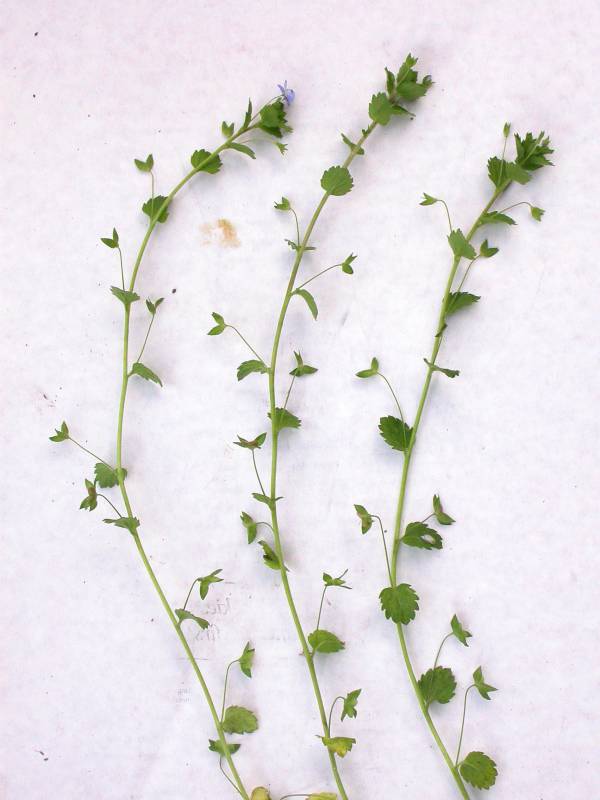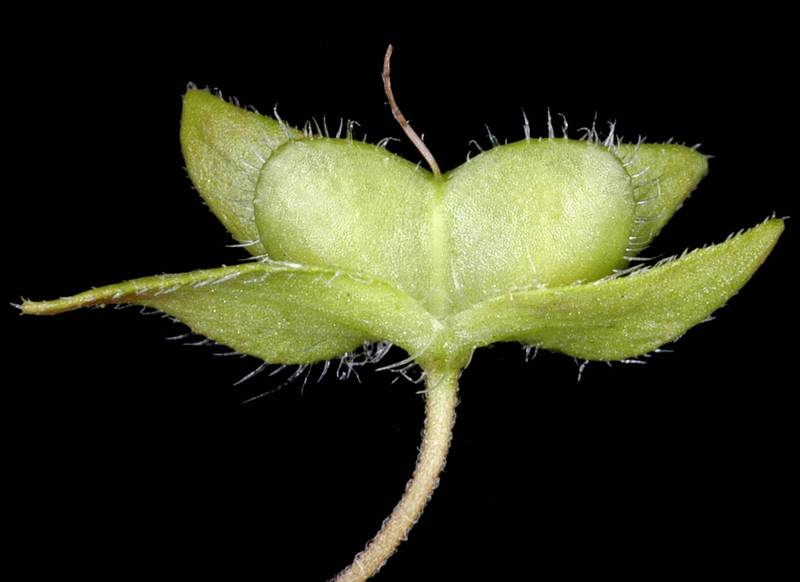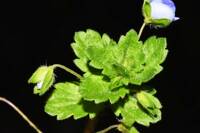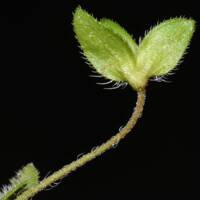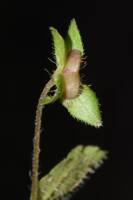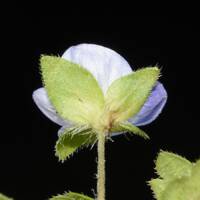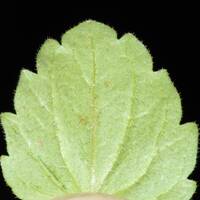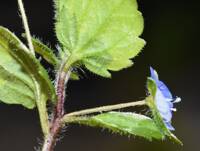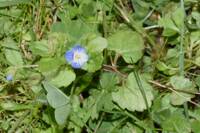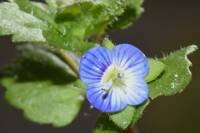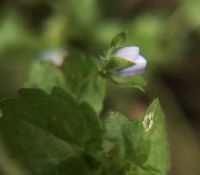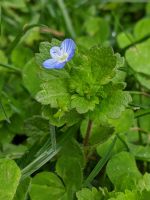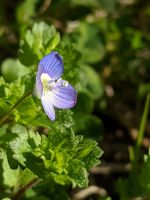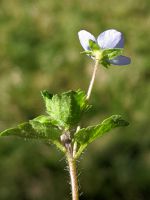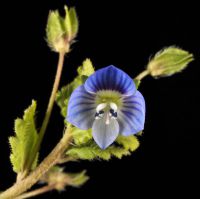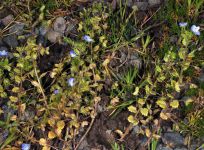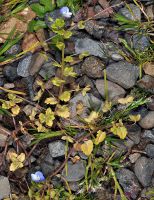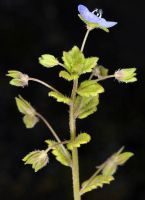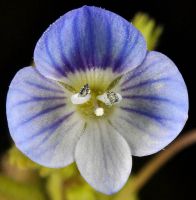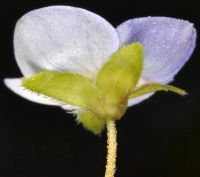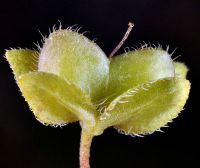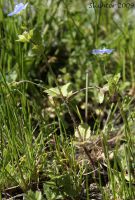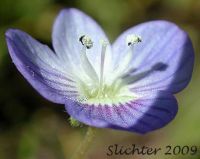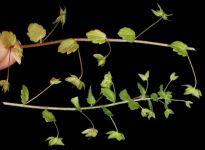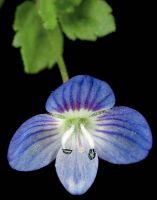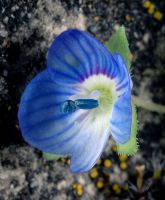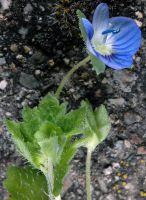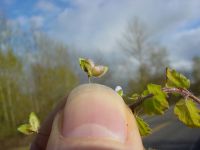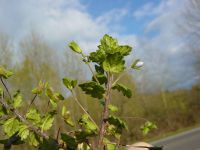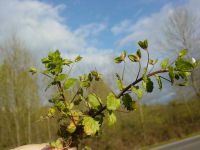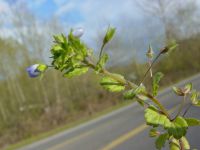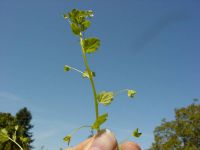Distribution: Occurring on both sides of the Cascades crest in Washington; Alaska to California, east across North America to the Atlantic Coast.
Habitat: Lawns and waste ground.
Flowers: March-May
Origin: Introduced from Europe
Growth Duration: Annual
Conservation Status: Not of concern
Pollination: Bees, flies
Taprooted annual, the stems 1-4 dm. long, lax, simple or branched below, loosely ascending, often rooting at the lower nodes.
Principal leaves opposite, short-petiolate, the blade broadly elliptic or ovate, with rounded serrations, 1-2 cm. long and half to three-fourths as wide.
Flowers single on long pedicels (up to 4 cm. in fruit) along an elongate stem, each subtended by a leaf-like, alternate bract, which are reduced upward; sepals 4, prominent, often veiny; corolla blue, the lower petal usually white, 5-11 mm. wide, rotate, 4-lobed; the upper lobe the largest; style 1.5-2.5 mm. long; stamens 2.
Capsule 5-9 mm. wide and 3-5 mm. high, with a broad notch.
Publication: Encycl. 8: 542. 1808.
Veronica persica Poir. var. corrensiana (Lehm.) B. Boivin
Veronica persica Poir. var. persica
PNW Herbaria: Specimen records of Veronica persica in the Consortium of Pacific Northwest Herbaria database
WA Flora Checklist: Veronica persica checklist entry
OregonFlora: Veronica persica information
E-Flora BC: Veronica persica atlas page
CalPhotos: Veronica persica photos


